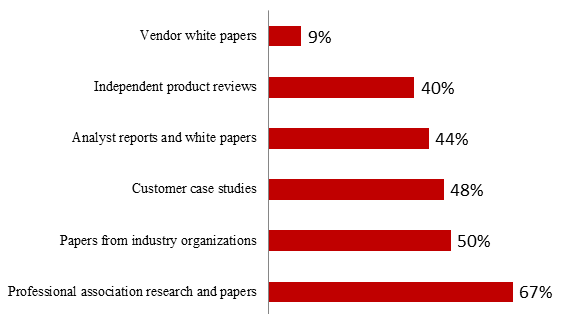
by Fronetics | Aug 21, 2014 | Blog, Leadership, Strategy, Talent
Want to advance? Stop whining. Whining won’t get you to the top.

Whining. Just writing the word makes me cringe. Whining is a truly unattractive characteristic. It is unattractive in children and it is even more unattractive when adults partake. One of the reasons why whining is just so unattractive is that it is ineffective and it can make a brilliant leader look like, well, like a blithering child.
Given this, why is there so much whining in the office? Ron Ashkenas, a senior partner at Schaffer Consulting and author of several books on organization change and effectiveness, wrote in a post for the Harvard Business Review:
The reality is that all of us whine, complain, blame others, and try to avoid responsibility. It’s part of the human condition. Nobody likes to clean up problems caused by others — or admit that they’ve created problems themselves. We also try to preserve a positive self-image and we go to great lengths to get others to perceive us positively as well. Given these basic human dynamics, most of which are unconscious, it’s often easier to talk to colleagues about what somebody else is doing wrong. At worst we’ll get sympathy. At best, we’ll convince someone else to take care of the problem.
Ashkens continued, noting that the current economic environment and organizational structures have made it so that “it’s tough to get things done — which leaves people feeling frustrated and in need of a sympathetic ear.” But let’s be honest. When your co-worker comes up to you whining (again) about this or her workload — do you really feel sympathy?
Let’s look a little closer at what Ashkenas said. Essentially, whining is used as a tool to “blame others” and “to avoid responsibility.” Neither blaming others nor avoiding responsibility are positive traits. Neither of these traits will get you hired nor will they get you promoted. The qualities that will get you that next job, which will get you recognized, and will get you promoted are stepping up, taking responsibility, and taking action — the antithesis of whining.
In his book The Last Lecture, Randy Paush astutely wrote:
If you took one-tenth the energy you put into complaining and applied it to solving the problem, you’d be surprised by how well things can work out… Complaining does not work as a strategy. We all have finite time and energy. Any time we spend whining is unlikely to help us achieve our goals. And it won’t make us happier.
Want to be taken seriously? Want to be effective? Want to be successful? Stop whining.

by Elizabeth Hines | Aug 20, 2014 | Blog, Leadership, Strategy, Supply Chain, Talent

Losing an employee is costly — very costly. Yet, many organizations don’t know how to ensure that its human resource assets don’t just walk away.
The US Department of Labor Bureau of Labor Statistics reports that more than 2 million people voluntarily leave their jobs each month. The Society of Human Resources Management has found that the cost of replacing an employee ranges from 50 percent of the employee’s annual salary to 400 percent of their annual salary. What do these numbers mean? They mean that the cost of replacing an employee with an annual salary of $45,000 could be between $16,000 and $160,000. And the cost of replacing your employee with an annual salary of $150,000 could range from $60,000 to $600,000. Not inexpensive.
In July 2013, Tompkins Supply Chain Consortium released its Supply Chain Talent Report. According to the report, the supply chain industry is expected to experience an increase in turnover within the next 18 months. Most impacted will be positions in planning, procurement, and manufacturing. Reasons include plant closures, outsourcing, and the need for specialized skillsets. There are other reasons as well. Accenture conducted a study (across industries) and found the top four reasons why employees quit their jobs are: a lack of recognition (43 percent), internal politics (35 percent), a lack of empowerment (31 percent), and because they don’t like their boss (31 percent).
For managers, several lessons are there to be learned. Let’s start with the simple lessons. These lessons involve flipping the negatives (the reasons for leaving) to the positive (creating reasons for staying). That is: recognize employees, empower employees, and take steps to remove from the work environment as much bureaucracy and internal politics as possible. By taking these steps the employee who is considering a move may change their tune. If not, it is reasonable to talk with an employee and determine what the issue is. If the issue is something that cannot be addressed and if it is impacting productivity and team morale, explore transferring the employee within the company.
Other keys to employee retention include buy-in and success. Specifically, it is important to gain buy-in from your employees. If an employee is going to be motivated to not just do their job, but to excel at their job — they need to buy-in. They also need to, regularly, succeed and realize progress. A great resource on achieving buy-in and enabling success is The Heart of Change by John P. Kotter and Dan S. Cohen.
While the time and expense of retaining an employee may seem daunting, the cost of losing an employee is much greater.
Want to learn more about improving employee retention and hiring top talent? At Fronetics we work with clients to understand and execute on talent acquisition, performance management, learning and development, and succession management. Additionally, we offer management and leadership solutions to organizations within the supply chain and logistics industries during times of transition.
A version of this post previously appeared on EBN.

by Fronetics | Aug 19, 2014 | Blog, Content Marketing, Leadership, Marketing, Strategy, Talent

By consistently creating, curating, and distributing valued and trusted content you can position your company as an industry leader.
What is valued and trusted content?
“Peer-power”
A survey by the CMO Council found that all content is not viewed equally by B2B buyers. “Peer-powered content” is more valued and trusted than non-peer content.
The survey found that professional association research and papers are the most valued and trusted content. Papers from industry organizations, case studies, and analyst reports and white papers were also reported to be valued. In contrast, vendor white papers were not found to be valued highly.
What type of content do you most value and trust?

Source: CMO Council
Depth not promotional
The characteristics that were found to be valued the most by B2B buyers were depth of the content (47 percent) and ease of access and readability (44 percent). Respondents reported that they do not like content that has too many requirements to download (50 percent) or is promotional or self-serving (43 percent).
Good content is shared
B2B buyers report that they share good content. Fifty-nine percent of survey respondents share content with 25 or more peers and associates, and 28 percent of survey respondents forward content on to 100 or more people.
Position yourself
To position your company as an industry leader you need to provide valued and trusted content. This means creating, curating, and distributing content that educates, informs, and addresses specific needs.
It also means avoiding the trap of self-promotion. Valued and trusted content is not content that is self-serving or promotional, rather valued and trusted content provides customers with answers, solutions, and education.
Blogging is essential, but additional content is necessary as well. Case studies and white papers are two go-to content solutions that can help you position your company as a trusted leader within your industry.
Remember that you don’t need to go it alone. More than 44 percent of B2B marketers report that they outsource content creation.

by Fronetics | Aug 19, 2014 | Blog, Content Marketing, Leadership, Marketing, Strategy, Talent

By consistently creating, curating, and distributing valued and trusted content you can position your company as an industry leader.
What is valued and trusted content?
“Peer-power”
A survey by the CMO Council found that all content is not viewed equally by B2B buyers. “Peer-powered content” is more valued and trusted than non-peer content.
The survey found that professional association research and papers are the most valued and trusted content. Papers from industry organizations, case studies, and analyst reports and white papers were also reported to be valued. In contrast, vendor white papers were not found to be valued highly.
What type of content do you most value and trust?

Source: CMO Council
Depth not promotional
The characteristics that were found to be valued the most by B2B buyers were depth of the content (47 percent) and ease of access and readability (44 percent). Respondents reported that they do not like content that has too many requirements to download (50 percent) or is promotional or self-serving (43 percent).
Good content is shared
B2B buyers report that they share good content. Fifty-nine percent of survey respondents share content with 25 or more peers and associates, and 28 percent of survey respondents forward content on to 100 or more people.
Position yourself
To position your company as an industry leader you need to provide valued and trusted content. This means creating, curating, and distributing content that educates, informs, and addresses specific needs.
It also means avoiding the trap of self-promotion. Valued and trusted content is not content that is self-serving or promotional, rather valued and trusted content provides customers with answers, solutions, and education.
Blogging is essential, but additional content is necessary as well. Case studies and white papers are two go-to content solutions that can help you position your company as a trusted leader within your industry.
Remember that you don’t need to go it alone. More than 44 percent of B2B marketers report that they outsource content creation.

by Fronetics | Jul 30, 2014 | Blog, Marketing, Social Media, Strategy, Supply Chain, Talent

Source: www.social-hire.com
Great talent is out there. The question is – where? With more than 73 percent of online adults and 89 percent of job seekers using social networking sites the answer is clear – online.
Many companies employ a strategy of “post and pray.” That is, they post the job on their website and then they sit back and wait for the applications to pour in. If you want to attract top talent, you need to move away from post and pray and instead use an active talent acquisition strategy.
Here are the components of an active strategy– one that will enable your company to attract and land top talent.
Post
In addition to posting the job description on your company’s website, post it on industry job boards and on LinkedIn.
Share
LinkedIn, Twitter, and Facebook are great places to share that your company has an opening and is looking for great talent. When using social media to share the job posting remember that, for example, the lifespan of a Tweet is about 18 minutes. Given this, it is necessary to share the job opening more than once so that it doesn’t get lost in the chatter.
Explore
Go out and look for talent. Look to the LinkedIn groups to which you belong. Are there individuals who, given their contributions to the group, seem like they would be a good fit for the position? If so, reach out to them and let them know they caught your attention. Share the position with them, and go from there.
Similarly, look to Twitter and to blogs. When looking at blogs to identify a potential candidate, look not only at the author, but also at people mentioned within a blog post.
Network
Use your network and your employee’s networks to share the position and to identify potential candidates.
The next time you have a job opening, try an active strategy. You’ll be amazed – an active approach to talent acquisition will yield a stronger pool of candidates.

by Fronetics | Jul 30, 2014 | Blog, Marketing, Social Media, Strategy, Supply Chain, Talent

Source: www.social-hire.com
Great talent is out there. The question is – where? With more than 73 percent of online adults and 89 percent of job seekers using social networking sites the answer is clear – online.
Many companies employ a strategy of “post and pray.” That is, they post the job on their website and then they sit back and wait for the applications to pour in. If you want to attract top talent, you need to move away from post and pray and instead use an active talent acquisition strategy.
Here are the components of an active strategy– one that will enable your company to attract and land top talent.
Post
In addition to posting the job description on your company’s website, post it on industry job boards and on LinkedIn.
Share
LinkedIn, Twitter, and Facebook are great places to share that your company has an opening and is looking for great talent. When using social media to share the job posting remember that, for example, the lifespan of a Tweet is about 18 minutes. Given this, it is necessary to share the job opening more than once so that it doesn’t get lost in the chatter.
Explore
Go out and look for talent. Look to the LinkedIn groups to which you belong. Are there individuals who, given their contributions to the group, seem like they would be a good fit for the position? If so, reach out to them and let them know they caught your attention. Share the position with them, and go from there.
Similarly, look to Twitter and to blogs. When looking at blogs to identify a potential candidate, look not only at the author, but also at people mentioned within a blog post.
Network
Use your network and your employee’s networks to share the position and to identify potential candidates.
The next time you have a job opening, try an active strategy. You’ll be amazed – an active approach to talent acquisition will yield a stronger pool of candidates.







